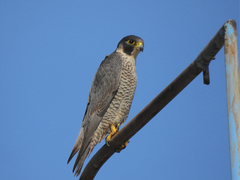European serin
Serinus serinus
Aves Serinus serinus, commonly known as the European Serin or verdecillo in the Comunidad Valenciana, is a small passerine bird in the finch family. It is notable for its vibrant plumage and melodious song.
- Appearance: The European Serin is characterized by its small size, typically measuring around 11-12 cm in length. Males boast a bright yellow-green plumage, particularly vivid around the head and underparts, while females and juveniles have a more subdued, streaked appearance with a mix of yellow, green, and brown tones.
- Habitat: This species is commonly found across the Mediterranean region, including the Comunidad Valenciana. It prefers open woodlands, gardens, orchards, and scrublands where it can easily find seeds, its primary food source.
- Behavior: European Serins are sociable birds often seen in small flocks. They have a fast, undulating flight and are known for their distinctive short, twittering calls and complex song which is often emitted from a prominent perch.
- Diet: Their diet mainly consists of seeds, particularly those of weeds and grasses. During the breeding season, they may also consume small insects to provide additional protein to their young.
- Breeding: The breeding season for the European Serin typically begins in early spring. Nests are usually built high in trees or bushes and are constructed using twigs, grass, and feathers. Females lay 3-5 eggs per clutch, which they incubate for about two weeks before hatching.
- Conservation Status: The species is widely distributed and currently listed as Least Concern by the IUCN, indicating a stable population without significant threats.
The European Serin adds a splash of color and song to the natural landscapes of the Comunidad Valenciana, making it a delightful bird to observe for both locals and visitors alike.







